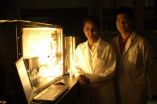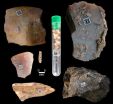According to the Christopher & Dana Reeve Foundation, there are currently more than 1,200,000 people in the United States living with spinal cord injury, and approximately 12,000 to 20,000 new cases occur each year. Most patients that suffer spinal cord injury are between the ages of 15 and 35. The long term cost of spinal cord damage is estimated to range from $500,000 to more than $3 million per patient, depending on the severity of the injury.
"This study demonstrates for the first time that an adult stem cell is capable of modifying multiple aspects of the wound response following a spinal cord injury, concurrently altering the inflammatory response to mitigate secondary injury in the central nervous system and increasing the regenerative potential of the damaged neurons themselves. Certain adult adherent stem cells are known to have immunomodulatory capabilities, but their potential to inhibit this detrimental inflammation-related process in spinal cord injury had not been investigated until now," said Jerry Silver, PhD, Professor in the Department of Neurosciences at Case Western Reserve School of Medicine. "Using preclinical models of spinal cord injury, we found that MAPC can both dynamically regulate macrophages, which cause inflammatory damage, and stimulate neuron growth simultaneously. Our results demonstrate that MAPC convey meaningful therapeutic benefits after spinal cord injury and provide specific evidence that these adult stem cells can exert both positive immunomodulatory and neurotrophic influences."
The study, "Multipotent Adult Progenitor Cells Prevent Macrophage-Mediated Axonal Dieback and Promote Regrowth after Spinal Cord Injury" demonstrates how the administration of MAPC potently affects immune cells responding to the initial injury in a number of ways. First, MAPC significantly decrease the release of a harmful protein called MMP-9 (matrix metalloproteinase-9), made by certain cells of the immune system known as macrophages, that is known to induce axonal dieback. MAPC also induce a shift in macrophages from an M1, or "classical activated" pro-inflammatory state, to an M2, or "alternatively activated" anti-inflammatory state. In addition to these effects on macrophages, MAPC promote sensory neurite outgrowth beyond the site of the injury, induce sprouting, and further enable axons to overcome the negative effects of macrophages as well as inhibitory molecules in their environment by increasing their intrinsic growth capacity.
"These results are consistent with effects we see in other neurological injury models, and provide further validation of MultiStem as an emerging stem cell therapy with broad potential for the treatment of a variety of conditions, including the often-devastating and seemingly irreversible after-effects of spinal cord injury ," said Gil Van Bokkelen, PhD, Chairman and Chief Executive Officer of Athersys. "Although significant research remains before we can apply these methods in human therapy, we view these results as very exciting, and we look forward to further exploring the clinical utility of MultiStem across a range of neurological indications."
This work was supported by National Institutes of Health–National Institute of Neurological Disorders and Stroke, the Brumagin–Nelson Fund for Spinal Cord Injury Research, National Institutes of Health Training, the New York State Spinal Cord Injury Research Program, and Athersys, Inc.
###
About Case Western Reserve University School of Medicine
Founded in 1843, Case Western Reserve University School of Medicine is the largest medical research institution in Ohio and is among the nation's top medical schools for research funding from the National Institutes of Health. The School of Medicine is recognized throughout the international medical community for outstanding achievements in teaching. The School's innovative and pioneering Western Reserve2 curriculum interweaves four themes--research and scholarship, clinical mastery, leadership, and civic professionalism--to prepare students for the practice of evidence-based medicine in the rapidly changing health care environment of the 21st century. Nine Nobel Laureates have been affiliated with the school of medicine.
Annually, the School of Medicine trains more than 800 MD and MD/PhD students and ranks in the top 20 among U.S. research-oriented medical schools as designated by U.S. News & World Report "Guide to Graduate Education."
The School of Medicine's primary affiliate is University Hospitals Case Medical Center and is additionally affiliated with MetroHealth Medical Center, the Louis Stokes Cleveland Department of Veterans Affairs Medical Center, and the Cleveland Clinic, with which it established the Cleveland Clinic Lerner College of Medicine of Case Western Reserve University in 2002. http://casemed.case.edu.
About MultiStem®
MultiStem is a patented and proprietary product consisting of a clinical grade preparation of adult (non-embryonic) stem cells obtained from bone marrow that have the potential ability to produce a range of factors and form multiple cell types. MultiStem appears to work through several mechanisms, but a primary mechanism appears to be the production of therapeutic proteins and other molecules produced in response to inflammation and tissue damage. Athersys believes that MultiStem represents a unique "off-the-shelf" stem cell product based on its apparent ability to be used without tissue matching or immunosuppression and its capacity for large-scale production.
About Athersys
Athersys is a clinical stage biopharmaceutical company engaged in the discovery and development of therapeutic product candidates designed to extend and enhance the quality of human life. The Company is developing MultiStem®, a patented, adult-derived "off-the-shelf" stem cell product platform for multiple disease indications, including damage caused by myocardial infarction, bone marrow transplantation and oncology treatment support, ischemic stroke, and inflammatory bowel disease. The Company is also developing a portfolio of other therapeutic programs, including orally active pharmaceutical product candidates for the treatment of metabolic and central nervous system disorders, utilizing proprietary technologies, including Random Activation of Gene Expression (RAGE®). Athersys has forged several key strategic alliances and collaborations with leading pharmaceutical and biotechnology companies, as well as world-renowned research institutions in the United States and Europe to further develop its platform and products. More information is available at www.athersys.com.
The Athersys logo is available at http://www.globenewswire.com/newsroom/prs/?pkgid=4548.
Forward Looking Statements
This press release contains forward-looking statements within the meaning of the Private Securities Litigation Reform Act of 1995 that involve risks and uncertainties. These forward-looking statements relate to, among other things, the expected timetable for development of our product candidates, our growth strategy, and our future financial performance, including our operations, economic performance, financial condition, prospects, and other future events. We have attempted to identify forward-looking statements by using such words as "anticipates," "believes," "can," "continue," "could," "estimates," "expects," "intends," "may," "plans," "potential," "should," "will," or other similar expressions. These forward-looking statements are only predictions and are largely based on our current expectations. A number of known and unknown risks, uncertainties, and other factors could affect the accuracy of these statements. Some of the more significant known risks that we face that could cause actual results to differ materially from those implied by forward-looking statements are the risks and uncertainties inherent in the process of discovering, developing, and commercializing products that are safe and effective for use as human therapeutics, such as the uncertainty regarding market acceptance of our product candidates and our ability to generate revenues, including MultiStem for the treatment of inflammatory bowel disease, acute myocardial infarction, stroke and other disease indications, and the prevention of Graft-Versus-Host Disease. These risks may cause our actual results, levels of activity, performance, or achievements to differ materially from any future results, levels of activity, performance, or achievements expressed or implied by these forward-looking statements. Other important factors to consider in evaluating our forward-looking statements include: the possibility of delays in, adverse results of, and excessive costs of the development process; our ability to successfully initiate and complete clinical trials; changes in external market factors; changes in our industry's overall performance; changes in our business strategy; our ability to protect our intellectual property portfolio; our possible inability to realize commercially valuable discoveries in our collaborations with pharmaceutical and other biotechnology companies; our possible inability to execute our strategy due to changes in our industry or the economy generally; changes in productivity and reliability of suppliers; and the success of our competitors and the emergence of new competitors. You should not place undue reliance on forward-looking statements contained in this press release, and we undertake no obligation to publicly update forward-looking statements, whether as a result of new information, future events or otherwise.
END



